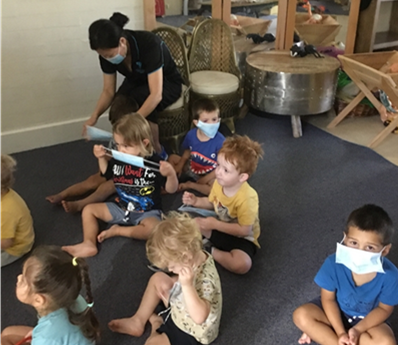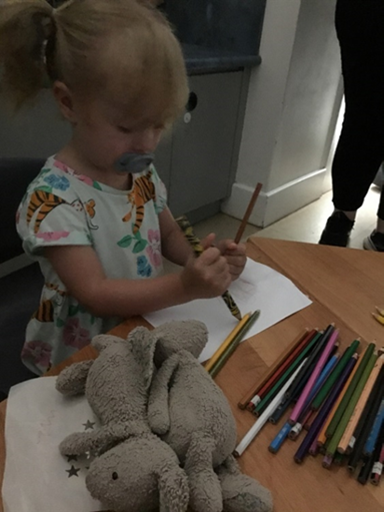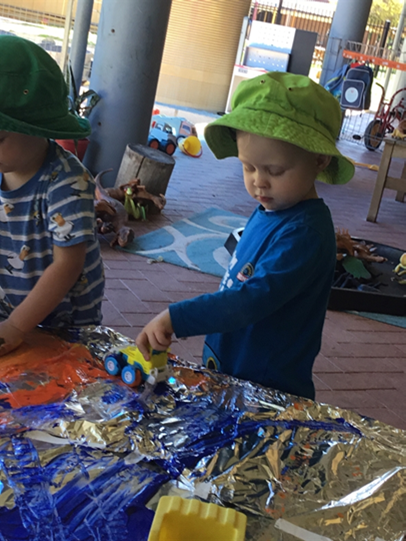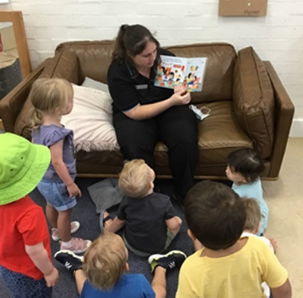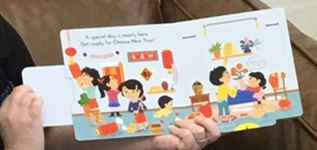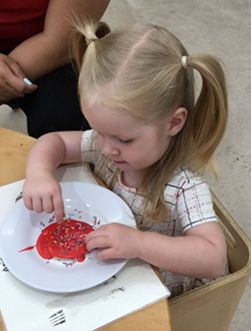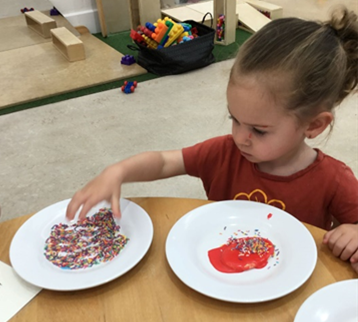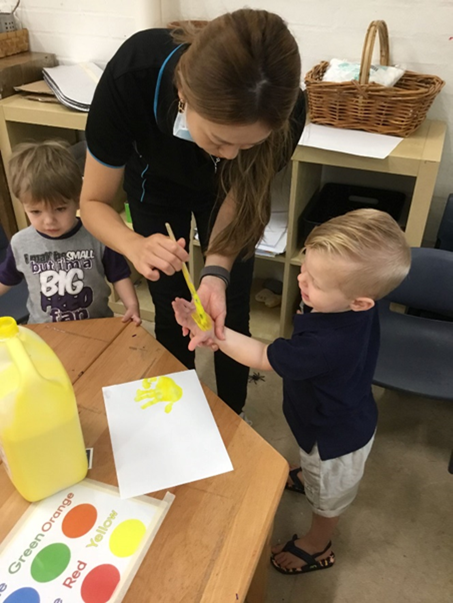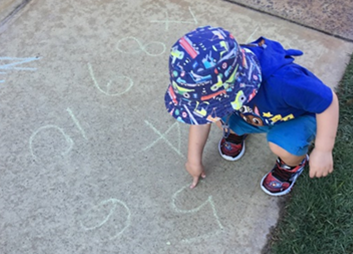In the Pikanini 2 room Miss Joy, our room leader, has created an inviting and welcoming environment for the children to learn and interact with their peers and educators.
We have welcomed new families and the transitions have all gone very well. Children are settled into their new environment and enjoying everyday activities.
We have a great team of educators working together well to help children develop and grow.
Community events:
We celebrated Australia Day this year by decorating the room with Australian colours and having a sausage sizzle picnic outdoors. This was enjoyed by all kids and staff alike.
We did various art activities using the colours of the Australian flag as well. Children also wanted some Australian flag washable tattoos and walked around very proud with these on their arms.
Children and staff were also encouraged to dress up in Australian colours.
Our Chinese New Year celebrations went very well. Miss Joy celebrated the Korean New year and she shared some of her stories around this with the children and staff.
We read an interactive Chinese New Year celebration book to the children and they all got involved, answering questions about the book, we had sensory play with red rice and also made art works predominantly using the colour red. We also watched and discussed some videos on various Chinese New Year celebrations around the world.
Further to this we also researched other cultures, the songs they sing and celebrations they hold. This taught the children about cultural diversity and respect for/appreciation of cultural differences.
On Valentine’s day children were encouraged to wear red as were the staff. Art works we painted using red. The best part of the day was decorating our biscuits with red icing and sprinkles. The children all ended up with red mouths as they enjoyed the biscuits for afternoon tea. They got to take one decorated biscuit home as well. We also spoke at forum about taking care of each other, loving our friends and family and being kind.
What we are focusing on as a team and Intentional Teaching
Sustainability- the way we incorporate this in the room is through the use of cardboard from boxes our resources were purchased in. We re-use paper by drawing on both sides and bringing in resources from home that we no longer need for the children to use such as pots, pans, cooking utensils, and parents often bring in items as well, (which is much appreciated).
In the room we are focusing on early morning devotions, praying and singing our read your bible song.
We have been showing the children in a five-step plan how to wash their hands properly. Children are getting used to waiting for their turn to wash their hands for morning tea, lunch, and afternoon tea times. We are placing an emphasis on good manners and also learning their teachers and friends names through the use of I.D photos.
We are learning the Lord’s prayer action song, and this is the highlight of each forum before afternoon tea. The children are responding so well and starting to know the actions that go along with the song.
We will send a link to parents so they can continue with this at home. This is a way to encourage the learning to continue at home and incorporate faithful teaching at home with families.
Intentional Teaching:
At the moment we are focusing on primary colours, numbers, name recognition, the different seasons and weather. We are encouraging the use of language skills. This we incorporate with book reading to the children, daily conversation, and open-ended questions. We are also incorporating memory skills, questioning the children about past events or what they did on the weekend or special moments with friends and family.
We also use the doughnut rope each time we leave the room to transition to the piazza for mealtimes. This encourages the children to walk together in a line, calmly and quietly. It is also good practice for our evacuation procedures. The doughnut rope is made up of different coloured circles, so the children are practicing and learning colour recognition and naming.
Our main focus over the past two months has been settling children into the room, skilling in routines and also starting the toileting process with those who are ready in partnership with families. We encourage toileting in a positive manner, not placing negative emphasis on accidents and praising children’s successes.
STEM is an acronym for science, technology, engineering, and math. STEM activities and learning in the early years provide children with the foundation to succeed at school and beyond. Young children learn through active exploration and the drive to observe, interact, discover, and explore is inherent in their development.
“During the earliest years, infants and toddlers develop 700 neural connections every second. These biologically driven neurological processes and natural curiosity about how the world works make early childhood an optimal time to introduce children to scientific inquiry.” – Dr Jennifer Buchter.
What does STEM look like in Early Learning Settings?
-Cooking activities
-Nature walks
-Challenging building activities
-Water play
National Quality Framework | Quality Area 1:
Educational Program and Practice
1.1 The educational program enhances each child’s learning and development.
1.2 Educators facilitate and extend each child’s learning and development.
University of Nevada. (2020, January 15). The Issues: Why STEM Education Must Begin in Early Childhood Education
Retrieved from https://www.unlv.edu/news/article/issues-why-stem-education-must-begin-early-childhood-education

